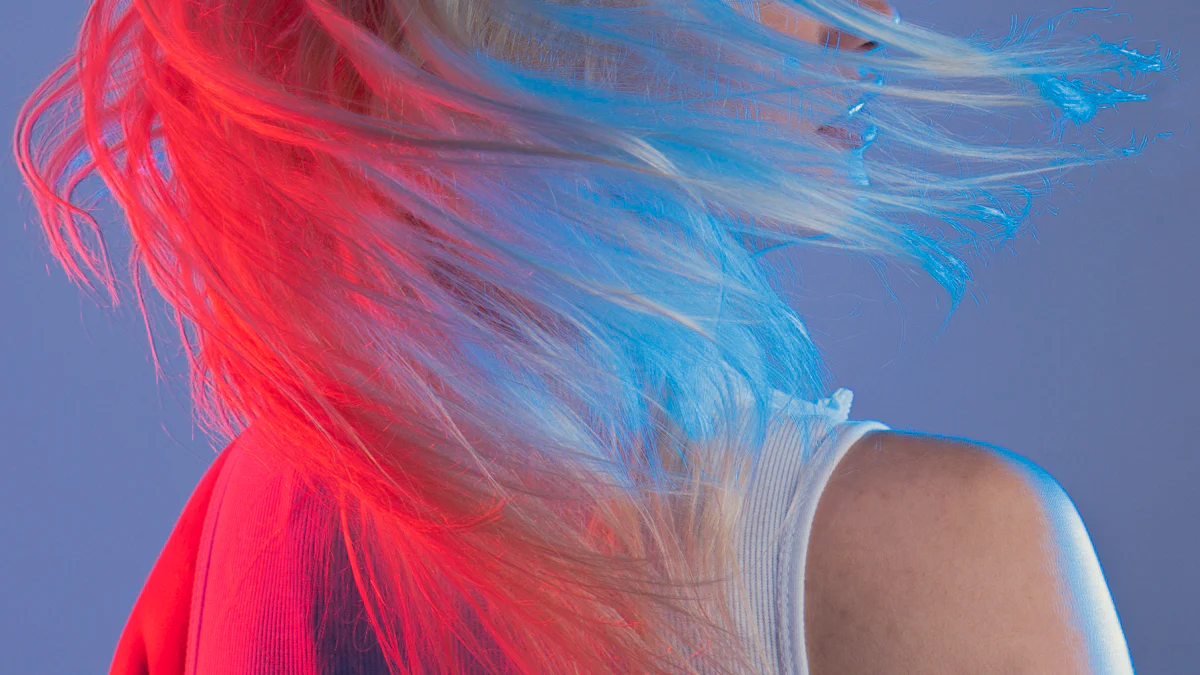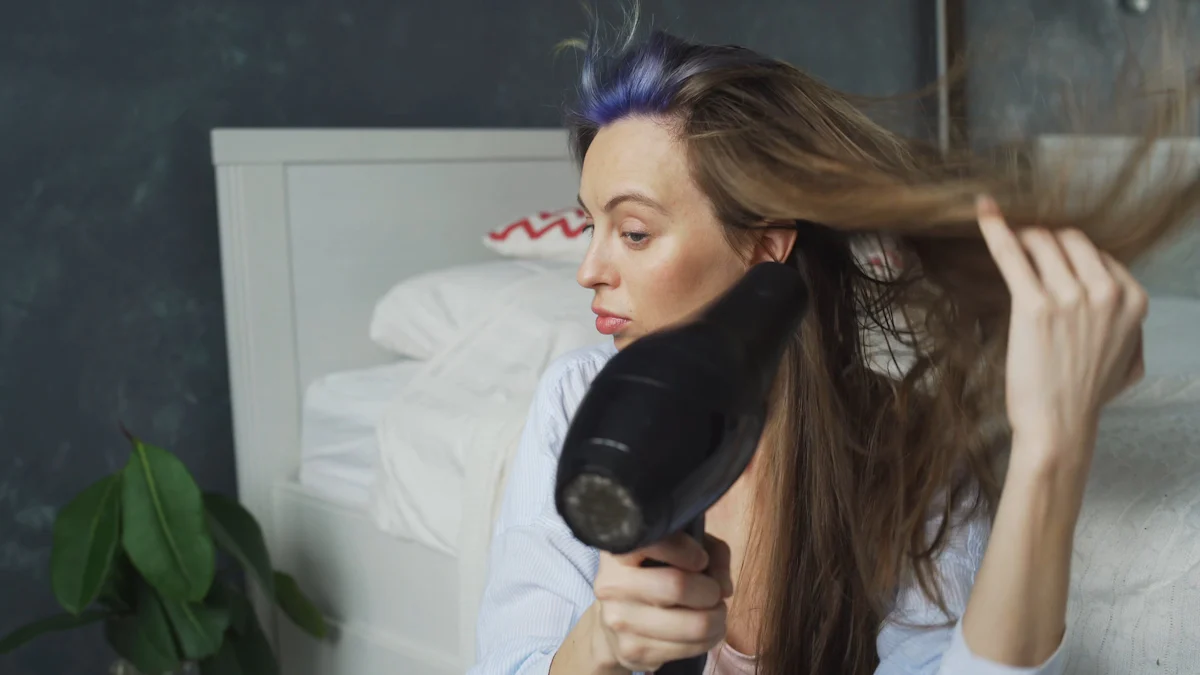How to Dye Human Hair Lace Front Wigs: A Step-by-Step Guide

Human hair lace front wigs offer a versatile and natural-looking solution for those seeking to enhance their appearance. Dyeing these wigs allows for customization and personal style, making each piece unique. This process holds particular significance for Black women, who often use human hair wigs to express individuality and creativity. As women, hair is very important to us. It is our crowning glory. A fresh cut and color can create a new and improved look, boosting confidence and transforming one's mood. The Luvmeforyou PartingMax Glueless Wig provides an excellent canvas for such transformations.
Preparing for the Dyeing Process
Gathering Materials
List of necessary tools and products
To begin the dyeing process, gather essential tools and products. The list includes:
-
Human hair lace front wig (such as the Luvmeforyou PartingMax Glueless Wig)
-
Hair dye suitable for human hair
-
Developer
-
Mixing bowl and applicator brush
-
Gloves
-
Wide-tooth comb
-
Mannequin head or wig stand
-
Plastic clips
-
Vaseline or petroleum jelly
-
Got2b glued spray or similar product
-
Shampoo and conditioner designed for colored hair
Optional items for convenience
Optional items can enhance the dyeing experience. Consider having:
-
Old towels or disposable tablecloths
-
Hairdryer
-
Timer
-
Toothbrush for precision application
-
Disposable apron
-
Foundation or powder for lace protection
Performing a Strand Test
Importance of testing the dye
Testing the dye on a small section of the wig ensures the desired color outcome. This step prevents unexpected results and potential damage to the entire wig.
Steps to perform a strand test
-
Select a small, inconspicuous section of hair from the wig.
-
Mix a small amount of dye and developer in the mixing bowl.
-
Apply the mixture to the selected hair strand using the applicator brush.
-
Allow the dye to process for the recommended time.
-
Rinse the strand with lukewarm water and assess the color result.
-
Adjust the dye mixture if necessary before proceeding with the full application.
Setting Up Your Workspace
Choosing a suitable area
Select a well-ventilated area with ample lighting for the dyeing process. A bathroom or kitchen with easy access to water works best.
Protecting surfaces and clothing
Protect surfaces and clothing to avoid staining. Cover work areas with old towels or disposable tablecloths. Wear an old shirt or disposable apron. Use gloves to protect hands from dye exposure.
Prepping the Wig
Washing and Drying the Wig
Using a gentle shampoo
Clean the wig with a gentle shampoo designed for human hair. Fill a basin with lukewarm water and add a small amount of shampoo. Submerge the wig and gently swish it around. Avoid rubbing or scrubbing the hair to prevent tangling and damage. Rinse thoroughly with clean, lukewarm water until all shampoo residue is gone.
Ensuring the wig is completely dry
After washing, blot the wig with a towel to remove excess water. Place the wig on a mannequin head or wig stand to air dry. Ensure the wig is completely dry before proceeding with the dyeing process. Use a hairdryer on a low heat setting if necessary, but avoid high heat to prevent damaging the hair fibers.
Securing the Wig
Fixing the wig on a mannequin head or stand
Secure the wig on a mannequin head or wig stand to keep it stable during the dyeing process. Use T-pins to anchor the wig in place, ensuring it does not move. This stability allows for precise application of the dye.
Dividing the wig into sections
Divide the wig into manageable sections using plastic clips. Start by parting the hair down the middle and then create smaller sections from ear to ear. Clip each section to keep the hair organized. This method ensures even dye application and prevents missed spots.
Applying the Dye

Mixing the Dye
Following the dye instructions
Read the instructions provided with the hair dye. Follow the specified ratios for mixing the dye and developer. Use a plastic bowl to combine the ingredients. Stir the mixture until it achieves a smooth consistency.
Achieving the desired color
Determine the desired color before starting the dyeing process. Adjust the dye mixture based on the strand test results. Ensure that the dye is thoroughly mixed to avoid uneven color application.
Applying the Dye to the Wig
Starting from the roots
Begin applying the dye at the roots of the wig. Use an applicator brush for precision. Work in small sections to ensure thorough coverage. Apply the dye evenly from the roots to the tips.
Ensuring even coverage
Distribute the dye evenly across all sections of the wig. Use a wide-tooth comb to spread the dye through the hair. Check each section to confirm that no spots are missed. Reapply dye to areas that appear lighter.
Processing Time
Following the recommended time
Allow the dye to process for the time specified in the instructions. Set a timer to keep track of the processing period. Avoid exceeding the recommended time to prevent damage to the hair fibers.
Checking the color development
Periodically check the color development during the processing time. Inspect a small section of the wig to gauge the color progress. Adjust the processing time if necessary to achieve the desired shade.
Rinsing and Conditioning
Rinsing the Wig
Using lukewarm water
Rinse the wig thoroughly with lukewarm water. Ensure that the water flows in the same direction as the hair to prevent tangling. Lukewarm water helps to open the hair cuticles, allowing for better removal of dye residue.
Removing all dye residue
Continue rinsing until the water runs clear. This step ensures that all dye residue is removed from the wig. Residual dye can cause irritation and affect the final color. Use your fingers to gently separate the hair strands while rinsing.
Conditioning the Wig
Applying a deep conditioner
Apply a generous amount of deep conditioner to the wig. Focus on the mid-lengths and ends of the hair. Deep conditioning helps to restore moisture and maintain the softness of the wig.
Letting the conditioner sit
Allow the conditioner to sit on the wig for the recommended time. This period allows the hair to absorb the nutrients and moisture from the conditioner. Afterward, rinse the wig thoroughly with lukewarm water to remove all traces of the conditioner.
Drying and Styling

Drying the Wig
Patting dry with a towel
After rinsing, gently pat the wig with a soft towel. Avoid rubbing to prevent tangling and damage. The towel should absorb excess water without causing frizz.
Air drying or using a blow dryer
Place the wig on a mannequin head or wig stand for air drying. Ensure proper ventilation to speed up the drying process. For quicker results, use a blow dryer on a low heat setting. Keep the dryer at a safe distance to avoid overheating the hair fibers.
Styling the Wig
Using heat tools if necessary
Once the wig is completely dry, proceed with styling. Use heat tools like flat irons or curling wands if desired. Set the tools to a low or medium heat setting to protect the hair. Always apply a heat protectant spray before using any heat tools.
Final touches and adjustments
Make final adjustments to achieve the desired look. Trim any uneven ends if necessary. Style the wig according to personal preference, whether opting for sleek straight hair or voluminous curls. Secure the style with a light hold hairspray to maintain the look throughout the day.
The dyeing process for human hair lace front wigs involves several key steps. Each step ensures a successful and vibrant result. Experimenting with different colors can create unique looks. The Luvmeforyou PartingMax Glueless Wig offers an excellent canvas for such transformations. Maintaining the dyed wig requires regular conditioning and gentle handling. Proper care will extend the life of the wig. Readers are encouraged to share their experiences and results. Luvmeforyou values customer feedback and aims to provide the best products and services.






















